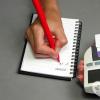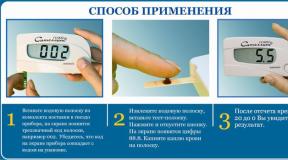The first signs of diabetes in women
Diabetes mellitus is considered one of the most common pathologies of modern society. About 30% of the population learn about their disease already at the stage of development of acute or chronic complications, which makes the healing process impossible. Women and men are equally susceptible to the development of pathology, the difference is only in the forms of diabetes mellitus and the characteristic age of patients.
The essence of the disease
Diabetes mellitus is manifested by a violation of metabolic processes in the body. This occurs due to a lack of one's own hormone insulin (observed in type 1 disease) or changes in its action (in type 2 diabetes).
Insulin is a hormonally active substance that is synthesized in the pancreas. The organ is located behind the stomach, weighs no more than 100 g. In addition to this hormone, the gland synthesizes pancreatic juice, which is involved in the digestive process. Insulin is produced by the beta cells of the islets of Langerhans-Sobolev. The total total mass of these cells is no more than 2 g.
Important! In parallel with beta cells, there are also alpha cells that synthesize the hormone glucagon, which has the opposite effect of insulin.
Insulin is a protein substance involved in metabolism. Its function is to "open the doors" for the penetration of glucose molecules into cells and tissues. Sugar is used to provide the body with energy resources, without which it will not be able to perform even elementary tasks (for example, the muscular apparatus will not contract).
Molecular chain of pancreatic hormone
The hormone also promotes the entry of amino acids into cells. These substances are used for the synthesis of complete proteins. Another important task of insulin is that it contributes to the formation of reserves of fat cells in the human body.
Type 1 and 2 diabetes
Such a division of pathology is due to the fact that both types of the disease have a different origin, but the same manifestations. The main symptom is high blood glucose (hyperglycemia).
1 type
This form of diabetes in women is less common, developing before the age of 40. An example of the occurrence of pathology:
- A person who has a hereditary predisposition to the disease develops an infectious disease. It can be measles, rubella, parotitis, even SARS.
- The virus that enters the body provokes the production of antibodies against pancreatic cells.
- Antibodies destroy the insulin secretory cells of the pancreas, but the first symptoms of the pathological process occur only when more than 75% of the cells have already died.
Important! Such a long period from the onset of the disease to the appearance of a clinical picture explains the incurability of the pathology.
type 2
This form of diabetes also has a connection with heredity, but here we are talking about something else. Type 2 disease develops in the presence of congenital reduced sensitivity of cells and tissues of the body to insulin. The disease manifests itself in women after 40 years.
Tissues that are exposed to insulin have special sensitive receptors, which are affected by the hormonally active substance. Over time and under the influence of provocative factors (pathological body weight, malnutrition, high blood pressure numbers), the receptors cease to fully respond to insulin stimulation. The pancreas produces a sufficient amount of the hormone, but the cells simply “do not see” it.

Brief description of non-insulin dependent type of diabetes mellitus
Manifestations of the disease
All signs of diabetes in women are divided into two large groups:
- primary;
- secondary.
Primary Symptoms
Most women do not pay attention to their condition for a long time, because in modern society, female representatives work no less than men. I just don't have enough time for myself. To start treatment in the early stages of the disease and prevent the development of complications, you should know which symptoms of diabetes are primary.
- Excessive thirst - the desire to drink in girls and women becomes pathological. A sick person can drink more than 5 liters of fluid throughout the day.
- Copious urine output - a person drinks a lot, respectively, and urinates a lot. In addition, the body tries to compensate for the condition of having a large amount of glucose in the blood by excreting it in the urine.
- Weight loss is combined with high appetite - these symptoms are characteristic of type 1 pathology. On examination, the patient's lean physique, pronounced cheekbones, ribs, and collarbones are determined.
- Fatigue, depression - the female body is not able to work as before. During the day, drowsiness appears, at night, on the contrary, patients may complain of insomnia.
- Dryness of the skin - a symptom is a continuation of the chain "thirst + profuse urination". Due to the massive removal of fluid from the body, patients feel that their oral cavity is overdried, the skin is dry, flaky.
Important! A little later, visual acuity decreases. It is especially characteristic of the clinical picture of sick women after 60 years, when the fundus of the eye is already undergoing age-related changes.
Patients may complain of a rash of unknown origin on the skin, itching sensation, including in the genital area. Seizures periodically occur, sexual desire is disturbed (especially pronounced in women after 30 years).

Violations in the intimate sphere - one of the manifestations of the disease
The first signs of diabetes in women over 50 years of age are accompanied by disorders of the musculoskeletal system. The main manifestation is the development of osteoporosis, which is manifested by pain in the back, joints, limited and stiffness of movements. The pathological condition is confirmed by laboratory and radiological diagnostics.
Secondary signs
Symptoms that occur against the background of the progression of diabetes and the development of its complications may be as follows:
- decreased memory capacity - lack of energy consumption by brain cells leads to their atrophy;
- itching of an unbearable nature - manifests itself in places of increased sweating (under the breast, in the armpits, inguinal region);
- the smell of acetone in the exhaled air - appears against the background of the development of a ketoacidotic state (complications of type 1 diabetes mellitus), in which acetone bodies accumulate in the blood and urine;
- the appearance of trophic defects on the skin of the lower extremities, often painless - occur against the background of impaired blood supply processes;
- a feeling of "crawling", numbness of the legs, arms - signs of damage to the peripheral nervous system;
- pathological increase in body weight - characteristic of type 2 disease.

The woman begins to rapidly gain weight, which is combined with other symptoms of the disease.
Important! There are also visual manifestations of the disease, which make it possible to differentiate it from other pathological conditions.
Initial visual manifestations of diabetes are absent, however, with progression, a change in the pigmentation of the skin appears. Areas of the skin appear in which the amount of pigment is sharply reduced. Here there are white spots that violate the aesthetic appearance.
In women who suffer from the disease for a long time, a thickening of the skin on the hands is visible. When examining the anterior abdominal wall, buttocks, thighs, shoulders, pronounced zones with a small amount of subcutaneous tissue can be identified. This condition is called lipodystrophy. It occurs against the background of frequent injection of insulin preparations in the same place (observed in most type 1 diabetics and some patients with type 2 disease).
Laboratory signs of diabetes
The main symptom of the disease is a high level of sugar in the blood, which is determined using a sugar test from a finger, biochemistry of venous blood, and measuring the level of glycemia at home with a glucometer. A single increase in numbers is not evidence of the development of pathology. Hyperglycemia must be observed over several tests for a specialist to confirm the diagnosis.
Important! As the disease progresses, glucose also appears in the urine, which should not be in a healthy woman.
Another reliable indicator is glycosylated hemoglobin. This substance allows you to determine the average level of sugar in the bloodstream over the past 90 days. As a rule, figures above 6% make the doctor think about the pathology, above 6.5% - confirm the diagnosis of diabetes.

Blood is a biomaterial that allows you to confirm or refute the presence of a pathological condition.
Type 2 pathology is also confirmed using a glucose tolerance test. During the analysis, the sensitivity of the cells and tissues of the patient's body to glucose, and, accordingly, to insulin, is specified.
If any of the above symptoms appear, you should consult an endocrinologist. This is a qualified specialist who will prescribe a diagnosis and, if necessary, select a treatment. You don’t need to self-diagnose yourself, as well as choose medications to fight the disease, since hyperglycemia is the main symptom of diabetes, but it can also be observed against the background of other diseases.



















